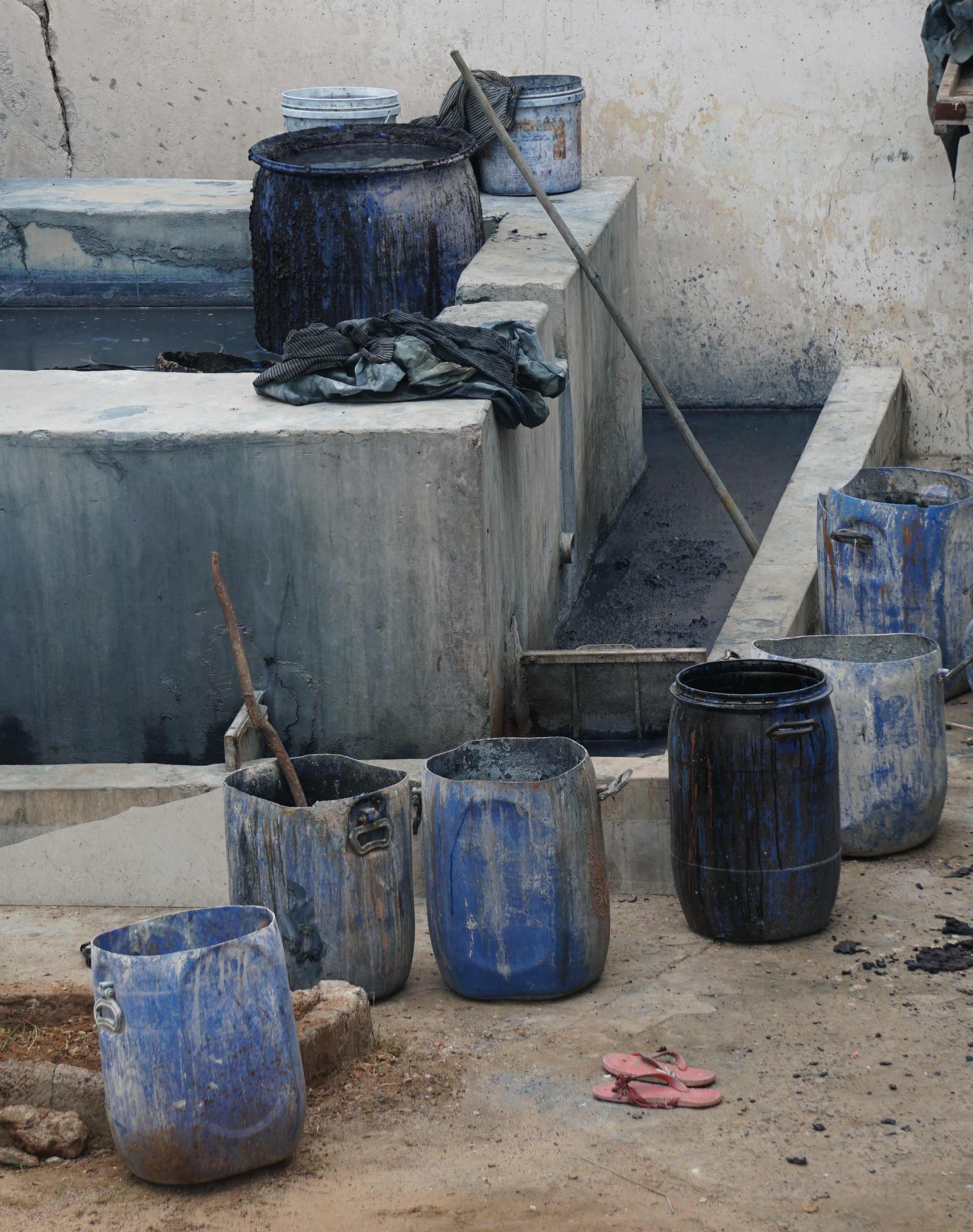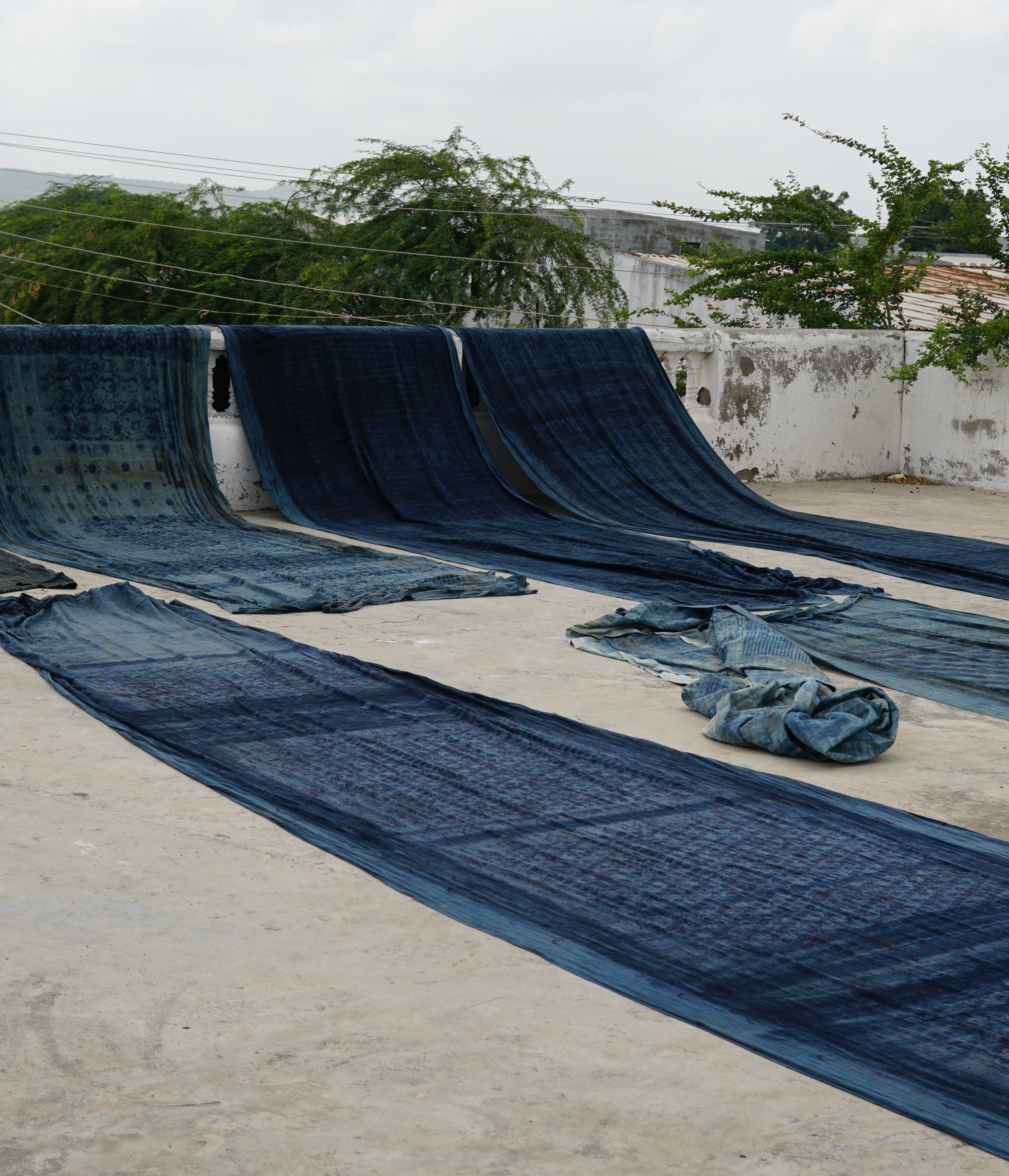Ismail Khatri: Taking the generational craft of Ajrakh forward
On his journey and challenges, to now the future of Ajrakh.
Ajrakhpur in Gujrat became synonymous with the Khatri family, the strong standing custodians of the ancient craft of Ajrakh. We got a chance to speak to Dr. Ismail Mohammad Khatri, a master dyer in Ajrakhpur about his ancestors, the history of the craft and his hopes for Ajrakh’s future.
Q: Dr. Ismail, you come from a family that have been the true custodians of the craft of Ajrakh since centuries. Could you tell us a little bit about the history of Ajrakh in Kutch?
IK: Ajrakh is originally a craft from the Sindh region. Around 400 years ago, the king of Kutch, Rao Bharmal Maharaj asked my ancestors to migrate from Sindh to Dhamadka. Dhamadka was chosen because of the source of flowing water which is needed for the dyeing process of the craft. Ajrakh them became a local craft of Kutch. Every community wore it differently. Women farmers draped the Sadla — a half sari in four distinct colours, while others paired it with long blouses and skirts. Maldhari men wrapped Ajrakh lungis, tied turbans, even spread it as a mat for prayer. Ajrakh became an identity marker for these communities.
Q: What have been some significant periods in the history of Ajrakh that you witnessed?
IK: In the 1960s and 70s, when mill printed fabrics and polyester flooded the market, Ajrakh lost its everyday relevance. Many families abandoned the craft, but my family continued because the river in Dhamadka sustained our dyeing work when nothing else could. Then came 2001, when the earthquake destroyed Dhamadka. Homes and workshops fell, and we were forced to face the reality of leaving the craft behind. But we stood strong for our craft and our legacy, our community built Ajrakhpur from the ground up — a village dedicated to the craft of Ajrakh and its practitioners. Those moments of decline and devastation tested us, but they also shaped the resilience of our craft.
Q: We now see many artists and designers working with the craft of Ajrakh while collaborating closely with Ajrakhpur. How did this visibility come about?
IK: Ajrakh got a significant attempt at conservation in 1973 with “Gurjari”, the Gujarat government’s initiative to connect artisans with urban markets. It created demand and visibility we had never known before. Soon after, designers from National Institute of Design (NID) came to Dhamadka. They worked with us on layouts, sizing, and colour combinations that appealed to modern buyers. More importantly, they questioned the toxic naphthol dyes we were using and encouraged us to return to natural dyes — indigo, madder, pomegranate peel, mud.


Q: What does Ajrakh symbolise for you today?
IK: Ajrakh to me is patience—a craft that cannot be rushed, where every wash, every layer of resist, demands time. It is a balance between red and blue, geometry and nature, and most importantly earth and water.
When I speak of Ajrakh, I am reminded that its motifs were found on the robes of a king’s figurine from Mohenjo-daro, on terracotta tiles from Kalibangan, on patterns unearthed in Dholavira. To realise that the designs we print today echo a 5,000-year-old story is humbling.
What began as a fabric of identity for pastoral and farming communities is now preserved in museums and reinterpreted in ateliers across the world. For me, Ajrakh the identity of not just the 14 generations in my family, but of an entire civilisation.




